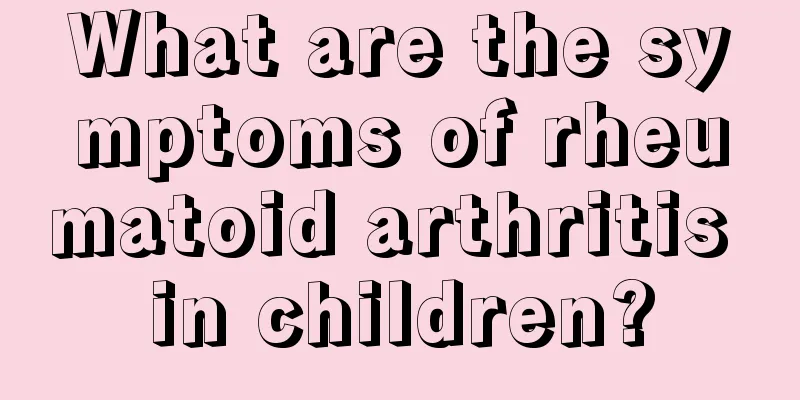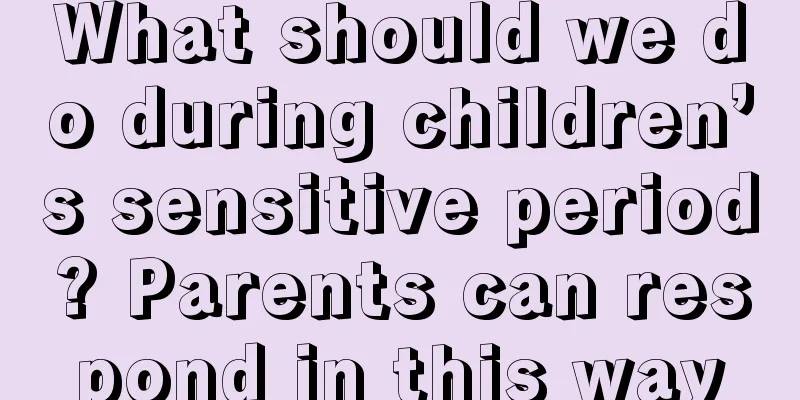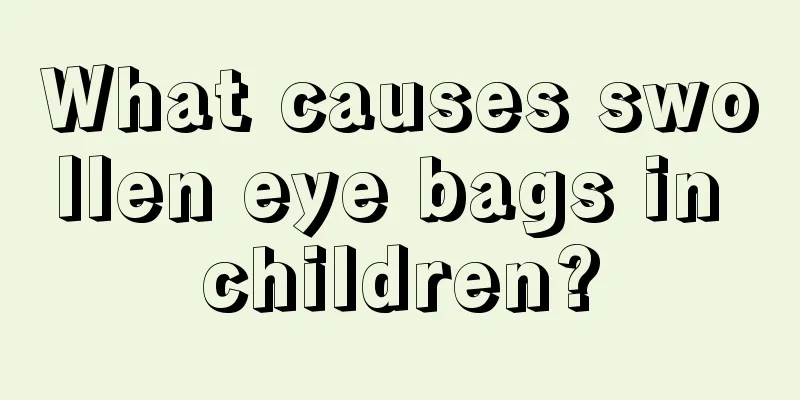What are the symptoms of rheumatoid arthritis in children?

|
Many people don’t know that children can also get rheumatoid arthritis, and many people think that this disease only affects adults. However, the incidence of rheumatoid arthritis in children is also very high. This is when children's joints are in the development stage. If children suffer from joint trauma or a humid environment, they are likely to develop rheumatoid arthritis. The onset of the disease is different for each child. They will have symptoms such as cold, fever, pharyngitis, etc. a week before the onset of the disease. Joint stiffness, redness, swelling and pain will appear a week later. Parents should send their children to the hospital for treatment in time. Rheumatoid arthritis is prone to recurrence, and it can basically be cured if it is eliminated as soon as possible. Symptoms of Rheumatoid Arthritis 1. Systemic juvenile rheumatoid arthritis Systemic juvenile rheumatoid arthritis About 20% of JRA patients show this type. There are prominent extra-articular symptoms and arthritis symptoms, and systemic symptoms include remittent warmth, rash, splenomegaly, lymphadenopathy, pericarditis, pleurisy, abdominal pain, leukocytosis, and anemia. Disseminated intravascular coagulation occasionally occurs. 2. Rheumatoid factor-negative polyarticular JRA Rheumatoid factor-negative polyarticular JRA. In 20% to 30% of JRA patients, multiple joints are affected within a few months of onset without obvious systemic manifestations. And RF test was negative. There are at least 4 affected joints, and almost all joints except the spinal joints may be affected. Even the small joints of the hands and feet, the cervical vertebrae, and the hip joints are not uncommon. Joint symptoms are often manifested as swelling, pain, warmth, tenderness, and movement disorders. When the finger and toe joints are affected, there is typical fusiform swelling; when the temporomandibular joints are involved, there is difficulty in opening the mouth. Young children may complain of ear pain. If the disease lasts for a long time, it may affect local development and cause micrognathia. Involvement of the laryngeal arytenoids (cricoid cartilage-arytenoid cartilage) may cause hoarseness, laryngeal wheezing and difficulty eating. Some children have particularly obvious joint movement disorders in the morning, which is called morning stiffness. The affected joints are usually not red. There may be a large amount of exudate in the joint cavity. Obvious periosteal inflammation makes joint symptoms very prominent. Rheumatoid arthritis knows no age limit and is difficult to cure. It has severe recurrences. Once a child is suffering from it, it will cause serious harm to his future life. Scientific prevention is also crucial. Parents should pay attention to the cleanliness and dryness of the room. Children should not sleep on the floor in summer and drink too much cold drinks, which will damage the stomach and intestines and make them prone to colds. It is good for children's health to go out to bask in the sun appropriately, use less air conditioning, and do more activities. |
<<: What are the reasons why children are often angry?
>>: What are the symptoms of rheumatism in children
Recommend
What are some ways to cultivate children's willpower?
Children nowadays are rather spoiled. Many parent...
What should I do if my baby has difficulty breathing due to a blocked nose?
In life, many young mothers will encounter the ph...
Six month old baby crying at night
When babies are young, due to their obvious mood ...
How old can babies swim?
Newborn swimming is a popular lifestyle nowadays....
What is the color of a full-month baby's stool?
Babies cannot express their thoughts when they ar...
Are probiotics useful for neonatal jaundice?
It is very hard for pregnant women to be pregnant...
How to supplement zinc and calcium deficiency in children
In life, we are all more concerned about the heal...
What to do if a boy is timid and cowardly
Boys are generally more generous than girls. At t...
What kind of milk is good for children
Milk is a very common food. It is rich in nutrien...
Children's spleen and stomach food conditioning
Many families pay great attention to the physical...
Can babies with eczema eat bananas?
Eczema is a common skin disease. Nowadays, it is ...
How to improve children's physique?
As children grow up, they will suffer from sympto...
How often should newborn diapers be changed?
Nowadays, many parents put diapers on their babie...
Causes and symptoms of neurogenic urinary frequency in children
Maybe you are not too familiar with the symptoms ...
Symptoms and treatment of colic in children_Treatment of colic in newborns
Because children have relatively low resistance, ...









